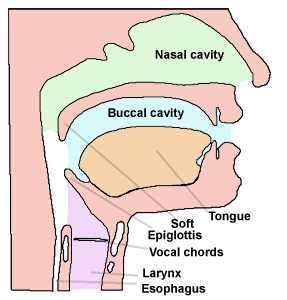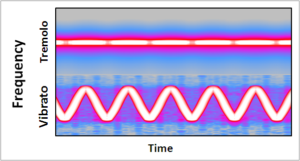Vocal Terms - part 1
Color Spectrum
Resonance
Vibrato_and_tremolo_graph
VOCAL TERMS - PART 1 There seems to be some confusion going on with different terms used by singing teachers, singers and the general public. This blog will hopefully bring some clarity. Part 1 of the Voice 101 series. TIMBRETimbre refers to the sound quality or 'colour' of a tone. It is the perceived sound quality of a music note, sound or tone. Often qualities of timbre are described by words such as bright, dark, rough, smooth, etc.). Vocal timbre is part of what makes some voices suitable for soloing or lead singing and other voices more suited to singing in groups or choirs. So even if a tone is sang at the same pitch and loudness, it is the timbre which makes us distinguish between different sounds. VOCAL RANGE Vocal range refers to the full spectrum of pitches that a human voice is able to produce, starting from the lowest note and reaching to the highes note. A well trained singer will have wider vocal range than an untrained singer because the trained singer is able to access more notes through correct technique. This can mean that, even if you think that you can only sing low, because you haven’t learned proper technique yet, you can still be a Tenor or Soprano. But even with a wider vocal range not every note of that range will be used for singing. In opera or solo classical music, often only the parts of the range that are considered musically useful are counted as part of the range. For example, since falsetto pitches are not used in most opera, they are not considered part of the vocal range of a male opera singer. A certain section of a singer's range, (likely the middle portion), will make up his or her most comfortable and practical range, whereas other sections of the same singer's range, (the highest and lowest portions), will be available or accessible, but will not necessarily be as strong or as desirable in tone. In contemporary styles of singing, singers usually perform with amplification (microphone, speakers etc) which makes more of their range audible and therefore usable. TESSITURA The term tessitura, (which comes from the Italian word for 'texture'), generally describes the most musically acceptable and comfortable timbre for a singer. Put simply, it refers to the range of pitches in which a singer is most comfortable singing, as well as the section of a singer's range where the voice has the most pleasant-sound or tonal quality and volume. Tessitura also refers to the range within which most notes of a vocal part fall. A song might have a large range but if the highest note is only sang once very briefly, it will be easier to sing the piece, compared to a song which requires the singer to constantly sing in his/her highest range. VOCAL RESONATION Vocal resonation is the process by which the basic product of voiced sound is enhanced in timbre and/or intensity by the air-filled cavities through which it passes on its way to the outside air. Resonance, therefore, is voiced sound that is amplified and modified by the vocal tract resonators (the throat, mouth cavity, and nasal passages). See Resonance and Articulation http://vo cals-on-stage.com/resonance-and-articulation/ The strength of tone must be gained not only by good, steady breath but also by the way in which a singer uses his or her vocal resonance. The end result of resonation is, or should be, to make a better sound. VIBRATO Vibrato is a musical effect, for which the voice is alternating subtly and very quickly between two pitches that are very close together. This periodic variation in the pitch of a sustained musical note should not exceed a semitone either way from the note itself. The effect is intended to add expression and warmth to a note. The vibrato of a singing voice should be produced on vocal fold level, by reflexively tilting the laryngeal cartilages back and forward. This effect causes a free, even and fast vibrato. A vibrato should never be faked, otherwise the sound will sound ‚wobbly’ and more like pitch errors than a free flowing note. When good tone production, breath, and sound resonance are in place, vibrato becomes a natural result. It is something that the body does on its own, not something that we force our bodies to do. TREMOLO The term tremolo and vibrato are sometimes used interchangeable, even though they are actually very different from each other. While a vibrato is defined as a periodic variation in pitch, a tremolo is a rapid repetition of a single note or repetition of two different notes that are usually separated by more than a whole step. Do you have any questions in regards to singing? Is there’s something you always wanted to know? Just ask us: contact@vocals-on-stage.comLike us on Facebook



